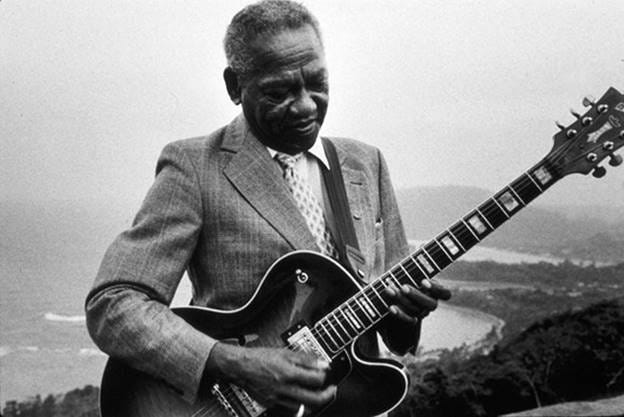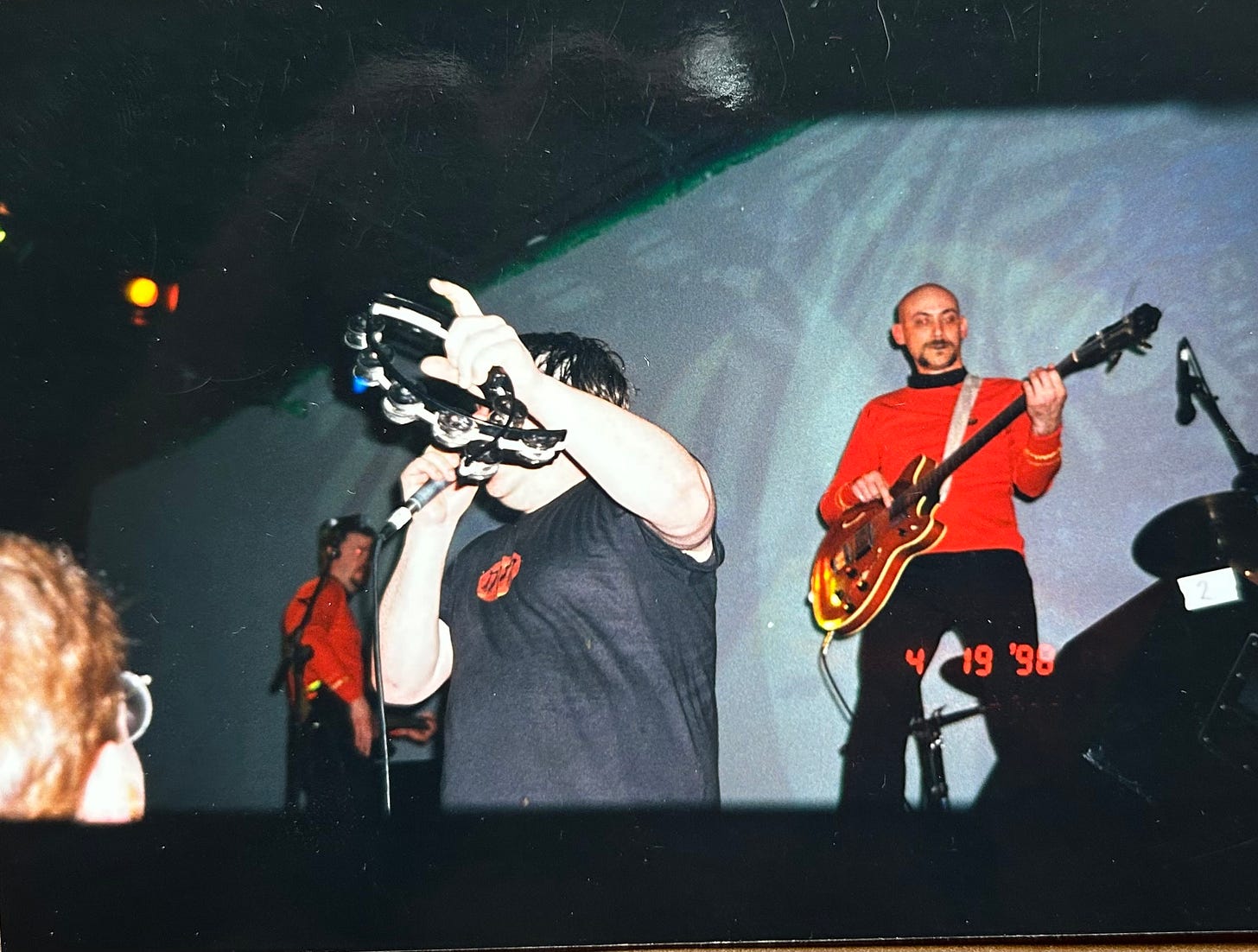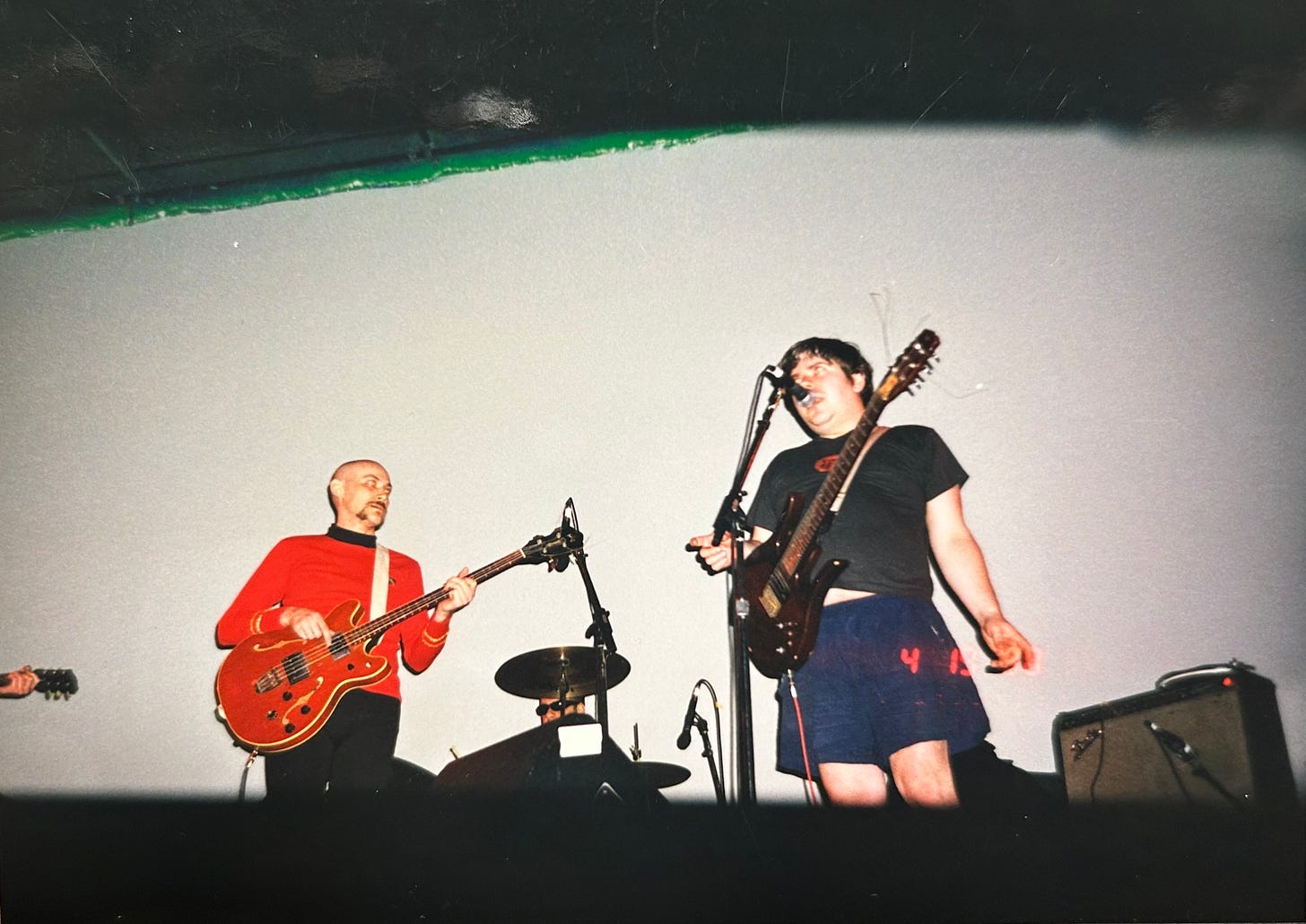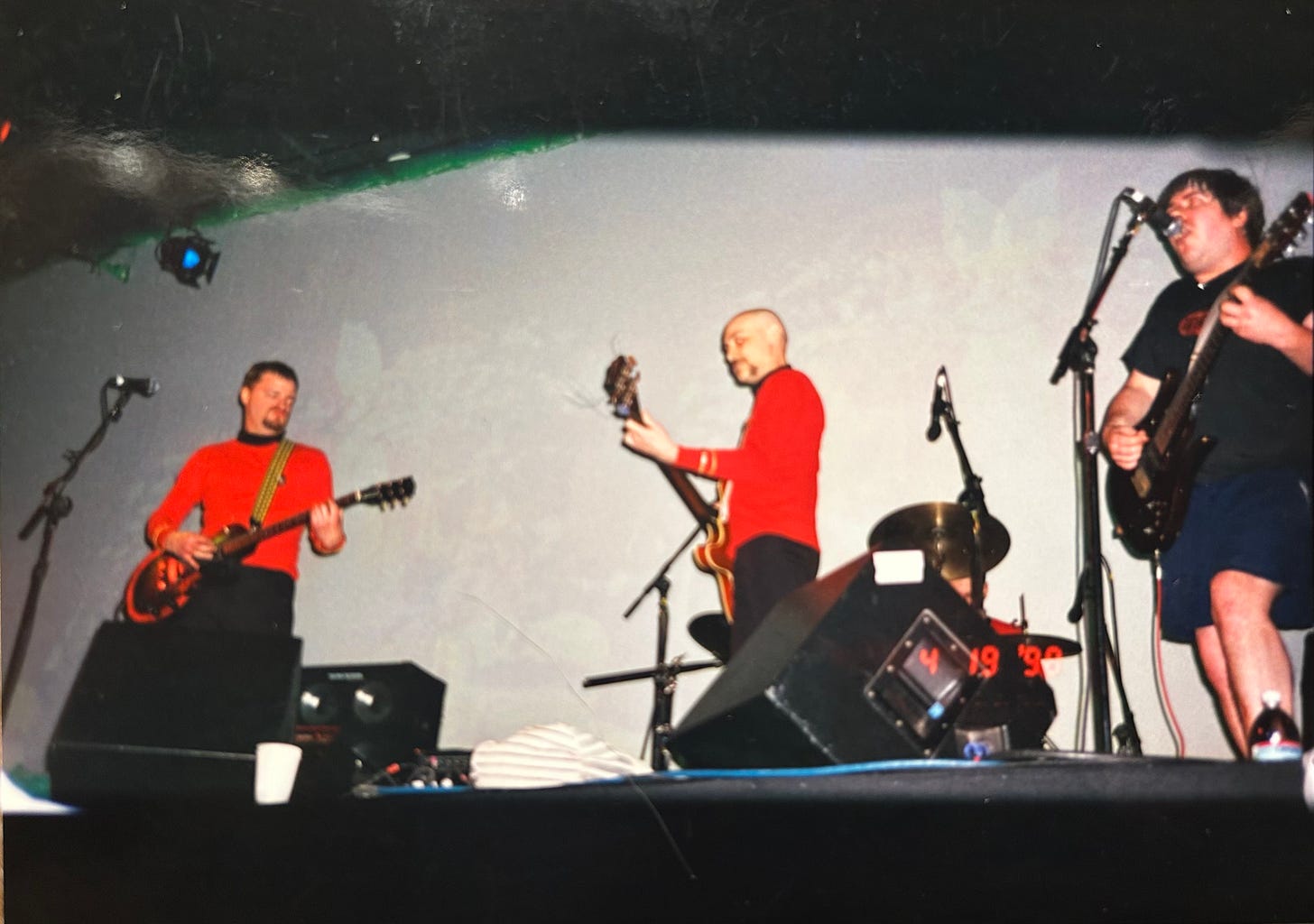T-Boned at the Parlor Party of the Ages
“And do you know another thing, Arthur? Life is too bitter already, without territories and wars and noble feuds.” ― T.H. White
***I found out yesterday that my dear friend James Lowe passed away at 82, the lead singer of one of the greatest bands of the psychedelic era, The Electric Prunes. James and I have been friends since the late-90s when we met to work on a Prunes compilation that spawned a whole new era for the band. Working with him, being friends with him, was a true gift. Such an incredible, innovative, imaginative force of life. I wrote about our history as a forward to an interview with James I ran in The Signal in 2021. You can check it out here. My heart goes out to Pamela, his beautiful wife of 62 years, his kids Lisa, Cameron, and Skylar, and his grandchildren, a true family electric. I will miss you, James.
George Miller was a pathologist in Milwaukee Wisconsin in the 40s and 50s, but for this story, the important detail about the man was that he was a big home recording hobbyist. Miller loved recording music and was the first one on his block to own a Webcor tape recorder. The pursuit of his hobby led him to meeting country music legend and fellow Wisconsinite Les Paul, who was also a pioneer in both amplified sound and multi-track recording (Lenny Waronker would always talk about Paul in the same breath as Phil Spektor and Brian Wilson when discussing the great race to increase the number of tracks available to use during a recording session). Miller’s Webcor tape recorder was the first one Paul ever saw, with a green eye knowing that Miller liked to use it to record live music during home shindigs.
Paul and Miller became friends. Miller was at the wedding of Paul and singer Mary Ford, he was actually the best man with his wife acting matron of honor. Paul became godfather to Miller’s son, Steve. When Paul heard 6-year-old Steve playing his guitar on a recording, he told George that Steve would be famous. Steve Miller in fact did become famous, writing and recording some of the biggest hits in the 1970s and 80s.
Because of his parents, Steve Miller had music very much woven into his life from the beginning. His mother Bertha was a jazz singer. His father’s hobby brought many musicians to his house. Not only did he get to know Les Paul, but after the family moved to Dallas, he was exposed to the jazzbos his father would hire for his parties, like guitarist Tal “The Octopus” Farlow and bassist Charles Mingus.
All of this was related to me by friend, writer and music historian Joel Selvin, someone who has known Steve Miller for decades. Joel and I occasionally have listening sessions in his lair in San Francisco, surrounded by his incredible record collection, smoking cigars, as Joel plays wonderful tracks from his deep-water vinyl holdings, much of which I have never heard before (I always leave hitting up discogs for some choice cuts I need in my collection). The Miller story was a precursor to playing me perhaps the most powerful and important of all of George’s recordings, made over a two-year span of parties, from 1950-1951, featuring one of the most exciting guitarists of that generation—of any generation—T-Bone Walker.
T-Bone Walker would have turned 115 this past week, a guitarist who helped define the jump blues era with his oh-so-influential hit They Call it Stormy Monday on the Black & White label. He played guitar with adept furiosity, hitting those strings hard, as if with a pick-axe, an aggressive sound that was equally clear as a bell (check out the solo on T-Bone Shuffle), always throwing Holy melodic forms through every musical break and attacking his chords with punk-rock-Ginsu-knife electricity. His songs were duets, between his sweet singing style and his jousting guitar, always in conversation, finishing each other’s thoughts. His style helped define both what Jazz was becoming and what Rock ‘n’ Roll would use as a foundation in its beginnings (you can check out his technique on a filmed later performance here and listen to his recordings here).
I know much of T-Bone Walker’s recording history, eating a full meal via both the comprehensive Mosaic boxset that came out in 1990 and the 78s I have collected along the way that when played on the right turntable foster a better understanding of the raw, intense qualities of his sound. But what Joel played for me that day in his home office was something completely different. When T-Bone played for George Miller’s audience, he shifted his set from what he played at the smokey nightclub hours before—his signature songs—to playing covers that he thought they might know. Bing Crosby’s hit Talk of the Town, The Mills Brothers’ Up The Lazy River, Hoagy Carmichael’s penned Stardust, made famous by many including Nat King Cole and Ella Fitzgerald: a truly unique set of songs Walker never played, yet translated through his incredible guitar style; he was playing to an affluent, possibly not-as-hip crowd that, judging by their reactions, loved every lick of music. George put the room microphone nearest to Walker’s amp, so that at times it is hard to hear his voice, but damn, does that warm, dark, rich sound of Walker’s slightly distorted electric guitar scratch the ear passages to the brain in the most satisfying way.
The George Miller recordings of T-Bone Walker are crucial to his legacy, featuring his style over the hits of the day, sounds that he otherwise never recorded….maybe even never played except for at these late-night parties. They offer another side to the artist, another dimension to understanding such an important musician. Knowing that during these visits, Walker also taught a young Steve Miller to play the guitar with his teeth and behind his back further highlights the importance of this moment, the passing off of information, of teaching, from one generation to another.
Jim Dickinson would say, “The best music is never recorded, and the best records don’t get released.” As of the writing of this newsletter, Steve Miller has not given permission for the recordings his dad made of T-Bone Walker to be publicly available. I have tried. I want to release this music desperately. But for now, only soundless pictures can be described: imagine an invitation to a friend’s house in the early 1950s. Upon arrival, you are ushered into the living room with other guests, all dressed in dinner jackets and party dresses. The room is framed by plush couches, modern art and a Victorian trolley overflowing with dark and light libations, a loaded ice bowl with silver tongs and some high ball glasses. In the corner, there is a raging band featuring a guitar player who is blazing heat into the room, laying tar blacktop guitar riffs and solos over your favorite songs. All of your friends are there, and everyone knows it is night like no other. And with each yanked string, with each foot stomping jam, everyone falls more deeply under the spell of one of the greatest guitar players of all time. The mighty T-Bone Walker.
Oh yes, very excited for this release. Tracing Ernest Ranglin’s music will take you through the early stages of ska and rocksteady….into the world-opening reggae music explosion…dub…and even into more jazz inspired music. He was a visionary as well as a guitar virtuoso who is mentioned as an influence to so many musicians. Just last weekend when reading the booklet that accompanied Count Ossie’s Nyabinghi classic Grounation, Ernest is mentioned in the same sentence as Duke Ellington as influencers on Ossie’s sound. This box set promises to tell a vital, completely unique musical story that is not well enough known, featuring both his most beloved and influential recordings, as well as ultra-rare sides, some of which have never been released. This box set is a needed thing. Check out the brand new kickstarter site for a video that showcases the artist, and grab an advance copy of the box set before they are all gone.
Francis Wilson ponders writing a book about the parties that literary types attend. A funny, smart piece of journalism: “Poets tend not to enjoy parties. W H Auden recalled that when T S Eliot was asked at a party if he was having fun, he replied, ‘Yes, if you see the essential horror of it all.’” If only T-Bone Walker was in attendance, playing with his band!
Banksy’s Back with a Lighthouse, and No Clue to its Location
“The lighthouse’s painted shadow connects to a bollard on a sidewalk but other than the image, Banksy provided no caption or means to identify its location…As usual, Banksy offered no clues to his newest work’s meaning.”
This is a fabulous deep-dive interview around the mystery of what happened to these three airmen and the in-depth search that is taking place now.
Scary Trailer For Pete Davidson's Haunted Retirement Home Horror Thriller THE HOME
OK…I am not a huge Pete Davidson fan. But this trailer for his new horror vehicle looks incredible.
The Dybbuk
for Delmore Schwartz
By: Boris Dralyuk
From the parched courtyards of our past
they grope toward us in the night,
the desperate shades of schnooks, outcast
before their debts are paid. One might
be in me as I speak, stuck fast.
Excuse my cough. It is the strain
all overburdened asses feel—
too many souls, like sacks of grain
strapped to my back. I stagger, kneel
in pain—not prayerful, pure and plain.
Come, brother dybbuk, to my trough.
Drink up. I’ll bear our double heap
of guilt, before I shuffle off
your half of it and make the leap
into some other poor dummkopf.
















"When sleep still doesn’t come, certain lines come to mind: T-Bone singing, “I drink to keep from worrying and I smile to keep from crying to keep the world from knowing exactly what’s on my mind.”
"Rhythm and the Blues"
by Jerry Wexler
Back from 1998-2001, when I was exiled from the “alternative” music biz due to a taxi crash then illness, I didn’t want to listen to a note from the genre I was a supposed expert in. So I listened over and over to the Charlie Parker & Billie Holiday Verve boxes we distroed while I was at Polydor US. I listened to the Robert Johnson box & the John Coltrane ‘Live At The Village Vanguard’ set I’d swiped during a 3-month hospital stay (pearls before swine). Somewhere along the way I picked up a Lightnin’ Hopkins set and a solid T-Bone Walker comp. T-Bone always seemed to play like he was mad. It was all a perfect palate cleanser.
I’d been lucky enough to see Albert Collins, Koko Taylor and others as a teen and Charlie Musselwhite & Robert Cray (in his indie label days) a few years later. But the earlier blues was next-level stuff.
A twenty-something skate dude in a black tee with pink letters spelling out “Home Taping Is Killing Music (And It’s Illegal)” just climbed on my bus. That’s my cue to shut up. My very best to you & yours, David.
PS It was Liars (not my hometown Lyres) that inspired me to get back in the game for a bit.